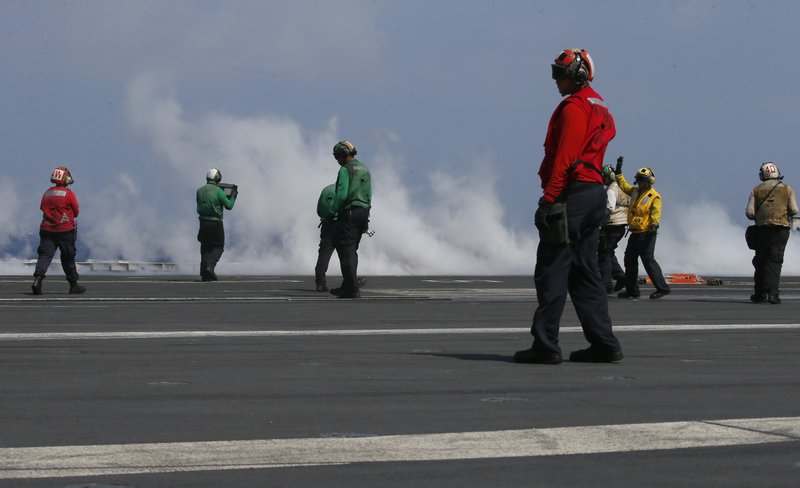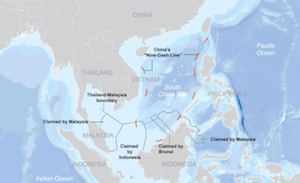MANILA, Philippines -- The Philippine defense chief and two other Cabinet members on Saturday toured a U.S. aircraft carrier patrolling the disputed South China Sea on the invitation of the Navy, U.S. Embassy officials said.
Defense Secretary Delfin Lorenzana, Finance Secretary Carlos Dominguez and Justice Secretary Vitaliano Aguirre II visited the USS Carl Vinson along with three Philippine security officials, said U.S. Embassy spokesman Molly Koscina.
The visit shows continuing top-level engagements between Philippine officials and the U.S. military despite Philippine President Rodrigo Duterte's threat to scale back engagements with American forces while reaching out to China and Russia. There was no immediate reaction from China, which had opposed U.S. patrols in waters it has claimed nearly in their entirety.
The U.S. ambassador to Manila, Sung Kim, accompanied the Philippine officials to the Carl Vinson, where they watched F18 fighter jets land and take off on catapult on the flight deck and met U.S. navy commanders in charge of the 95,000-ton carrier as it sailed in the disputed waters, Koscina said.
[INTERACTIVE MAP: Claims to the South China Sea]
U.S. Navy officials told a small group of journalists who were flown to the Carl Vinson on Friday that the U.S. warship deployment was aimed at ensuring freedom of navigation and overflight in the South China Sea, a key waterway for global commerce and security.
"We will be here," Rear Adm. James Kilby told reporters. "We're going to continue to demonstrate that international waters are waters where everyone can sail, where everyone can conduct commerce and merchant traffic."
Kilby's comments and the presence of the carrier in the South China Sea aimed to reassure American allies, who have expressed concerns over China's claims to most of the South China Sea. The nuclear-powered Carl Vinson, which has about 5,500 military personnel, has sailed through the contested region several times, and other U.S. warships have routinely patrolled the waters for decades, Kilby said.
In recent years, China has turned seven mostly submerged disputed reefs into islands where Beijing is now reportedly installing a missile defense system. Chinese officials have stressed that they have a right to carry out those constructions in what they say are their territories and added that they have no hostile intentions in the region.
Governments fear that China's actions could later restrict movement in a key waterway for world commerce with rich fishing grounds and potential undersea deposits of oil and gas.
Meanwhile Saturday, China said its military budget would rise by about 7 percent this year, apparently the lowest increase in seven years, signaling that its leaders do not plan to engage the United States in an arms race even as President Donald Trump seeks to bolster the Pentagon's spending. U.S. military spending in 2015, the most recent year available, amounted to about 3.3 percent of the gross domestic product.
Addressing reporters before the start of the annual National People's Congress, Fu Ying, a spokesman for the legislature, said the increase would be "about" 7 percent. She said military spending would amount to roughly 1.3 percent of China's GDP.
Last year's proposed increase was 7.6 percent, though China has yet to release final figures indicating how much was actually spent. Those figures, and the exact number of this year's projected increase, will be revealed in a budget that the government releases today, when the national legislature starts its annual full session.
Information for this article was contributed by Jane Perlez of The New York Times.
A Section on 03/05/2017

